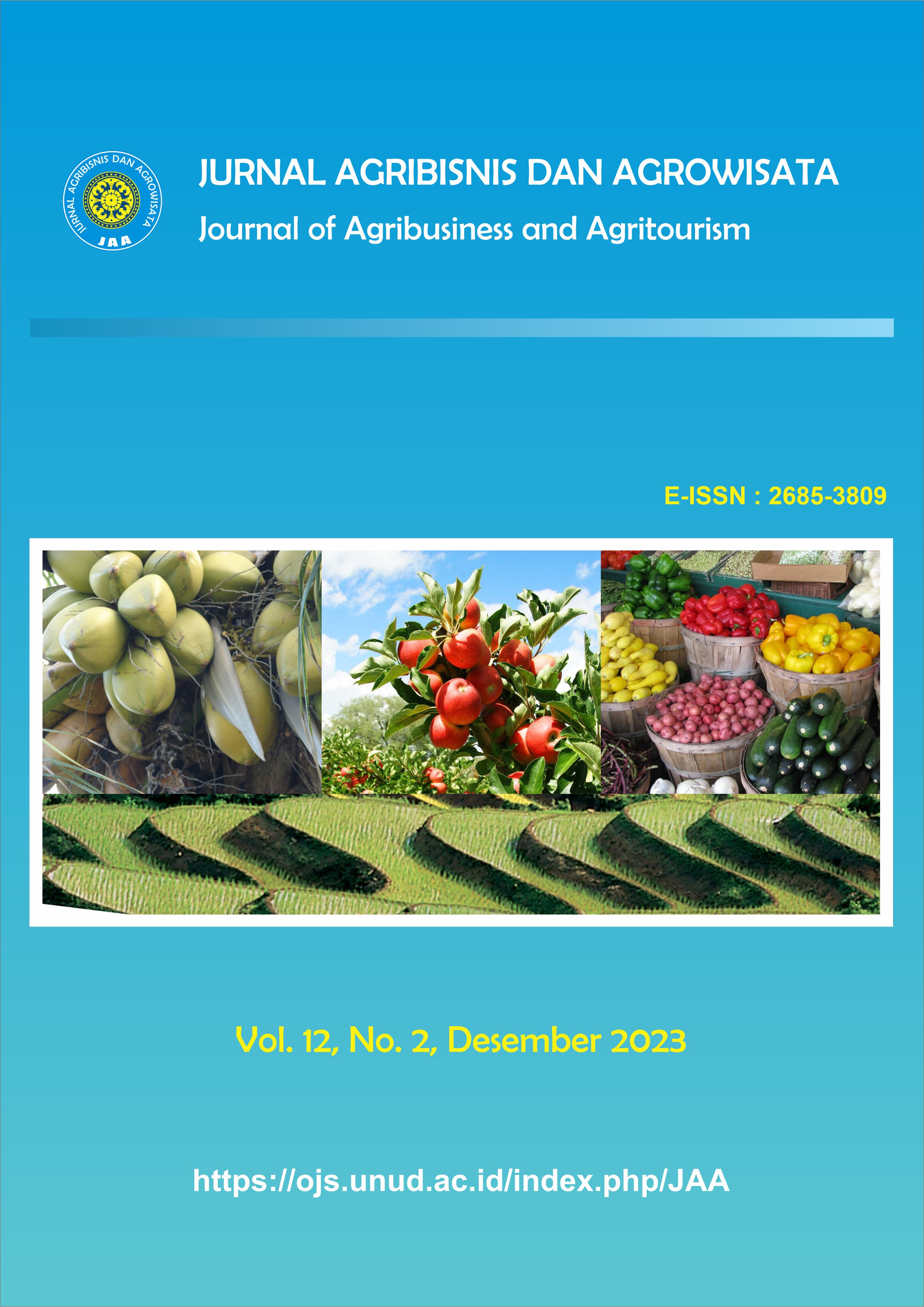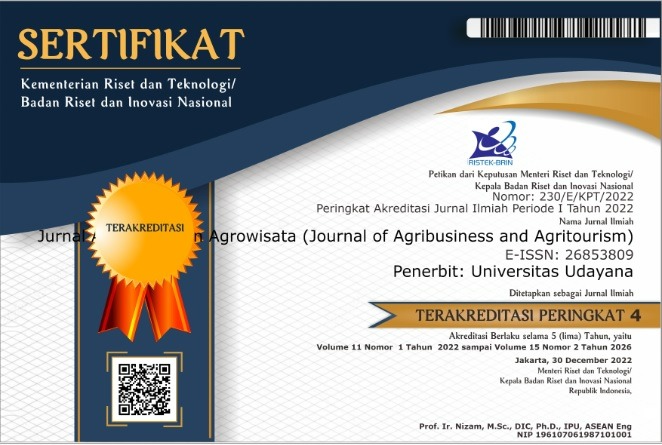Analisis Risiko Rantai Pasok Susu pada CV Nature Safe Jaya Kabupaten Banyuwangi Provinsi Jawa Timur
Abstrak
Diary Supply Chain Risk Analysis at CV Nature Safe Jaya Banyuwangi Regency East Java Province. Livestock is an agricultural sub-sectors that produces milk to fulfill needs of animal protein for the community. CV Nature Safe Jaya is a milk producing company located in Songgon District, Banyuwangi Regency, East Java Province. It’s milk production activities involve the supply chain. This research aims to identify risks that may arise and formulate mitigation as an effort to reduce the company’s supply chain risks. Data and information were obtained from key informants and all company employees as respondents. This research uses the Supply Chain Operation Reference (SCOR) method to analyze risk in the company's supply chain with a plan, source, make, deliver, and return framework. The identified risks were further analyzed using the Failure Mode Effect Analysis (FMEA) method to determine risk management priorities with a Risk Priority Number (RPN). The results showed that 13 risk events and 36 risk agensts were identified in the SCOR framework. There are five mitigation plans that can be formulated, namely (1) how to make improvements in the recording of the calculation of the amount of feed needed, (2) conduct periodic forage price surveys, (3) search for reserves/alternatives for other concentrate feed suppliers, (4) consider adding assets for the company, (5) tightening of checks before shipping.
##plugins.generic.usageStats.downloads##
Referensi
BPS. 2019. Produksi Susu Segar Menurut Provinsi 2009 - 2019. Badan Pusat Statistik. Jakarta.
Dharmika, I. K. Y., Dharmayanti, G. A. P., dan Purbawijaya, I. B. N. 2015. Manajemen Risiko pada Pembangunan Pengembangan Hotel yang Sedang Beroperasi (Studi Kasus pada Pembangunan Ectension Villa Hotel Alila Ubud). Jurnal Spektran, 3(2), 47-56.
Firdaus, H., dan Widianti, T. 2015. Failure Mode And Effect Analysis (FMEA) sebagai Tindakan Pencegahan pada Kegagalan Pengujian. In 10th Annual Meeting on Testing and Quality (pp. 131-147).
Hamka, H. 2010. Sistem Usaha Tani Terintegrasi Tanaman-Ternak. Agrikan: Jurnal Agribisnis Perikanan, 3(1), 1-8.
Parenrengi, S. M., Pujawan, I. N., dan Wiratno, S. E. 2005. Supply Chain Risk Management. Studi literatur dan pengembangan framework.
Rosnia, R., Sudrajat, I. S., dan Astuti, A. 2019. Analisis Risiko Pendapatan Petani Bawang Merah (Allium Cepa L.) Lahan Pasir Desa Srigading Kecamatan Sanden Kabupaten Bantul. Jurnal Ilmiah Agritas, 3(2), 33-43.
Soedjana, T. D. 2007. Sistem Usaha Tani Terintegrasi Tanaman-Ternak sebagai Respons Petani terhadap Faktor Risiko. Jurnal Litbang Pertanian, 26(2), 82-87.
Susanti, A., Puspitasari, D., dan Rinawati, D. I. 2018. Buku Ajar Manajemen Rantai Pasok Hijau.
Ulfah, M., Maarif, M. S., dan Sukardi, S. R. 2016. Analisis dan Perbaikan Manajemen Risiko Rantai Pasok Gula Rafinasi dengan Pendekatan House of Risk. Jurnal Teknologi Industri Pertanian, 26(1).
Yasa, I. W. W., Dharma, I. G. B. S., dan Sudipta, I. G. 2013). Manajemen Risiko Operasional dan Pemeliharaan Tempat Pembuangan Akhir (TPA) Regional Bangli di Kabupaten Bangli. Jurnal Spektran, 1(2), 30-38.







